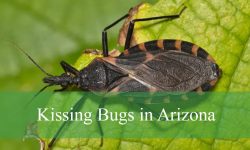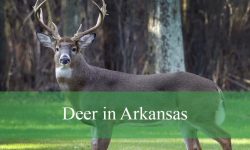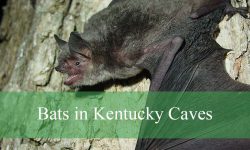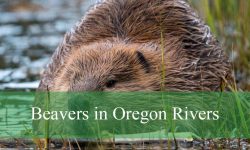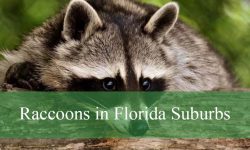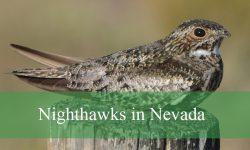Spotted lanternflies have become one of the most talked about insects in Pennsylvania. Vineyards across the state have reported sudden infestations, clusters of brightly colored bugs, and unexpected damage to grapevines. Their rapid spread has raised questions among farmers, residents, and scientists who are trying to understand why this pest is so successful.
These insects may look harmless with their patterned wings and slow movements. Yet their behavior, feeding habits, and biological resilience reveal a far more complex story. Pennsylvania’s vineyards have become a hotspot for lanternfly activity, and their presence affects ecosystems, agricultural production, and even local tourism.
This article uncovers the hidden secrets about lanternflies in Pennsylvania vineyards. From their reproduction strategies to the way they interact with grapevines, this deep dive shows why they have become such a major concern.
Understanding Lanternflies in Pennsylvania

What Lanternflies Really Are
The spotted lanternfly, Lycorma delicatula, is an invasive planthopper native to China, India, and Vietnam. It feeds on the sap of plants using a specialized mouthpart called a stylet. Although it cannot fly long distances, it glides efficiently and spreads with human assistance.
Its colorful appearance makes it easy to recognize. Adults have spotted forewings, bright red hindwings, and a gray body with black markings. Nymphs lack wings and appear black with white dots before turning red later in development.
Why They Invaded Pennsylvania
The lanternfly likely arrived on shipments of stone or plant material. Pennsylvania’s climate, vegetation, and agricultural landscapes offer ideal conditions for reproduction. The state’s abundance of host trees including the invasive tree-of-heaven supports rapid population growth.
Grapevines are among their preferred targets which places vineyards at direct risk.
How They Spread Across the State
Lanternflies spread through hitchhiking. Eggs laid on vehicles, outdoor equipment, firewood, or patio furniture travel across counties. Adults cling to cars and trucks. Their ability to use human mobility has helped them expand far beyond their original discovery site in Berks County.
Hidden Behaviors Few People Notice
Rapid Climbing and Crawling
Lanternflies crawl swiftly up tree trunks, fence posts, grape trellises, and barn walls. Their ability to climb helps them locate feeding sites. Despite appearing sluggish when approached, they can leap significant distances when threatened.
Host Switching
Lanternflies feed on more than seventy plant species. They switch hosts depending on growth stage and season. Grapevines are preferred in late summer and fall. This switching behavior enables survival when one food source becomes scarce.
Feeding in Groups
Lanternflies gather in large clusters. These groups produce significant sap loss from plants. Group feeding increases stress on grapevines and encourages fungal growth through excess honeydew excretion.
Anatomy and Adaptations of Lanternflies
Piercing Mouthparts
Lanternflies possess needle-like stylets that pierce plant tissue. They target phloem sap which contains sugars and nutrients. Their feeding weakens plants, reduces grapevine vigor, and affects fruit quality.
Strong Hind Legs
Their legs enable powerful jumps. These sudden leaps help them avoid predators or physical removal.
Coloration and Signaling
Their wings display bright red patches used during flight or defensive displays. Nymph coloration changes signal different life stages and feeding preferences.
Lanternfly Life Cycle in Pennsylvania Vineyards
Egg Stage
Egg masses appear as gray or mud-like patches on smooth surfaces. Females lay them on tree trunks, railings, rocks, grapevine posts, or farm machinery. Egg masses survive winter and hatch in spring.
One female may lay more than fifty eggs which contributes to rapid population expansion.
Nymph Development
Nymphs hatch in late spring. They pass through four growth stages. Early instars are black with white spots. Later instars turn bright red with black patterns. Nymphs travel widely and feed on a wide variety of plants including grape shoots and leaves.
Adult Emergence
Adults appear in midsummer. They gather around grapevines and tree-of-heaven stands. Adults feed heavily before laying eggs in fall. Their seasonal feeding peak aligns with grape harvest season.
Why Lanternflies Love Pennsylvania Vineyards
Sap Rich Grapevines
Grapevines contain sugar-rich sap that lanternflies rely on for energy. Mature vines support large populations. Their preference for grapevines becomes especially apparent during late summer.
Vineyard Microclimates
Vineyards create warm, sheltered environments. Trellises, posts, and irrigation systems offer climbing and resting areas. Adjacent forests or hedgerows provide additional host plants.
Long Growing Season
Pennsylvania’s extended warm season allows multiple feeding cycles which increase lanternfly survival and reproduction.
Feeding Impacts on Pennsylvania Grapevines
Sap Depletion
Lanternflies remove significant amounts of sap. This reduces energy available for fruit development and winter hardiness. Heavy infestations weaken vines and reduce yields.
Honeydew Accumulation
Lanternflies excrete sticky honeydew which coats leaves, grapes, and vineyard equipment. Honeydew attracts bees, wasps, and ants. It also promotes sooty mold growth that interferes with photosynthesis.
Stress During Harvest Season
Lanternfly activity peaks when grapes are ripening. Stress during this period affects sugar levels, acidity, and overall fruit quality. Winemakers must adapt harvest practices when infestations are severe.
How Lanternflies Affect Pennsylvania’s Wine Industry
Reduced Vineyard Productivity
Infested vineyards may experience reduced vine vigor and lower grape production. Long term infestations weaken vines leading to reduced harvests in following years.
Increased Costs
Growers spend more on monitoring, insecticides, and mitigation tools. Extra labor is required to remove eggs and treat vines.
Impacts on Wine Quality
High-pressure feeding may influence grape chemistry. Wineries must adjust fermentation or blending strategies based on changes in fruit composition.
Threat to New Vineyards
Young vineyards are especially vulnerable. Sap loss during establishment years may cause stunted growth or vine mortality.
Ecological Consequences in Pennsylvania
Disruption of Native Plant Communities
Lanternflies feed on dozens of native plants. Heavy feeding stresses trees and shrubs which may alter forest composition over time.
Influence on Insects and Birds
Honeydew attracts other insects. Birds feeding on lanternflies may rely on an unstable food source since lanternfly populations fluctuate dramatically.
Increased Tree Stress
Tree-of-heaven, black walnut, maple, and birch trees experience heavy sap loss. Some develop branch dieback after repeated infestations.
Myths and Misunderstandings About Lanternflies
Myth: Lanternflies Bite Humans
They do not bite people or pets. Their mouthparts only pierce plant tissue.
Myth: Killing One Makes No Difference
Every individual eliminated reduces egg-laying potential. Removing adults helps slow spread.
Myth: Lanternflies Only Infest Grapes
They feed on dozens of plants. Grapes become targets later in the season.
Myth: Lanternflies Die Off Quickly in Winter
Egg masses survive cold conditions. Winter does not eliminate future generations.
Predators and Natural Controls in Pennsylvania
Birds
Some birds including chickens and certain songbirds consume lanternflies. However, lanternflies are not a primary food source for most species.
Spiders and Praying Mantises
These predators catch adult lanternflies but do not reduce populations significantly.
Parasitic Wasps
Researchers study tiny wasps that parasitize lanternfly eggs. These wasps occur naturally in their native range but are not widespread in Pennsylvania.
Fungi
A fungal outbreak once caused mass lanternfly die-offs in Pennsylvania. However, conditions for fungal spread are not consistent yearly.
The Role of Tree-of-Heaven in Lanternfly Spread
Primary Host Preference
Tree-of-heaven, an invasive species itself, attracts lanternflies. They prefer feeding and laying eggs on this tree. Many infestations are found near large stands of tree-of-heaven.
Management Challenges
Removing tree-of-heaven requires chemical treatment and careful disposal. Cutting it without herbicide causes regrowth. Vineyard areas with untreated tree-of-heaven face higher lanternfly pressure.
Habitat Corridors
Tree-of-heaven along railways, roadsides, and abandoned properties creates travel corridors for lanternflies across the state.
How Lanternflies Survive in Pennsylvania Winters
Egg Mass Protection
Egg masses contain protective coatings. These coatings shield developing nymphs from freezing temperatures. They resemble dried mud and attach strongly to surfaces.
Microclimate Advantage
Eggs survive better on sun exposed surfaces. Buildings, tree bark, and rocks create microhabitats warm enough for overwinter survival.
Human Transport
Egg masses travel long distances on vehicles and equipment. This transport allows lanternflies to appear suddenly in new areas.
Agricultural and Community Impacts
Home Gardens
Lanternflies feed on roses, grapes, fruit trees, and ornamental plants in residential gardens.
Public Spaces
Parks and city trees sometimes experience heavy infestations. Honeydew accumulation cause slippery surfaces and mold growth.
Nuisance Presence
Clusters of lanternflies near homes attract attention. Although harmless, they create frustration for residents.
How Vineyards Can Respond
Monitoring
Sticky bands, tree traps, and regular inspections help track lanternfly numbers. Early detection matters.
Egg Removal
Scraping egg masses reduces spring hatch. Tools like plastic cards help remove eggs from smooth surfaces.
Insecticide Use
Targeted applications reduce adult and nymph populations. Chemical use must follow vineyard safety guidelines.
Habitat Management
Removing tree-of-heaven near vineyards reduces adult aggregation.
Protecting Young Vines
Barriers, netting, and scented repellents protect vulnerable new plantings.
Daily Activity Patterns of Lanternflies
Daytime Rest
During the day lanternflies remain still on trunks or posts. They absorb heat and conserve energy.
Late Afternoon Movement
As temperatures moderate, lanternflies become more active. They reposition and prepare for nighttime feeding.
Evening Feeding
Feeding intensifies around dusk. Groups gather on vines, trunks, and branches.
Future Risks for Pennsylvania Vineyards
Expanding Range
Lanternflies continue spreading across the Northeast. New infestations may appear suddenly.
Climate Influences
Warmer temperatures increase survival and reproduction. Climate change may extend lanternfly season.
Economic Pressure
Continued infestations raise costs for vineyard owners. Management programs require long term investment.
FAQs About Lanternflies in Pennsylvania Vineyards
Are lanternflies dangerous to humans
No. They do not bite or sting.
Why do lanternflies like grapevines
Grapevines produce sugar rich sap that supports adult feeding.
Can lanternflies kill grapevines
Heavy infestations weaken vines and reduce long term health.
Do lanternflies fly
They glide more than they fly. They often jump before taking flight.
Do they spread disease
Lanternflies do not spread plant diseases. Damage comes from feeding.
How can I stop them
Scraping eggs, killing adults, using traps, and removing host trees all help.
Why are they so abundant
Few natural predators and ideal climate conditions support large populations.
Can vineyards recover
Yes. With proper management many recover well.
When are lanternflies most active
Late summer and fall are peak activity periods.
Should I report lanternfly sightings
Yes. Reporting helps track spread and support state management.
Conclusion
Lanternflies in Pennsylvania vineyards represent one of the most significant agricultural challenges the state has faced in recent decades. Their rapid reproduction, broad host range, and attraction to grapevines create a powerful combination that threatens vineyard productivity. Understanding their biology and hidden behaviors is the first step toward managing their spread.
As Pennsylvania continues adapting to this invasive species, vineyards, researchers, and residents all play roles in reducing lanternfly numbers. Through monitoring, habitat management, and community awareness, the state can protect one of its most valuable agricultural industries.
Lanternflies may be small, but their impact is enormous. Learning their secrets helps safeguard the future of Pennsylvania’s vineyards and the wine they produce.

